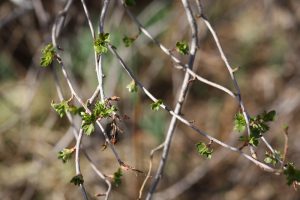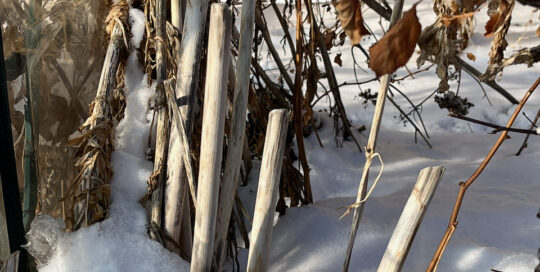Early Spring Pest Prevention
Views: 4741

The best protection against pests is to be proactive. It’s easy to be lulled into gardening happiness by the warm spring (really late winter) we’re enjoying. It’s been so nice that the golden currants in my garden are leafing out. This is typically one of my harbingers of spring, but I think this year it’s at least 2 weeks earlier than normal.
I’m used to seeing a few leaves in April and full blooms by the end of that month or the beginning of May. And from what I hear, the thousands of snow geese and other waterfowl have returned to our nearby Freezeout Lake. It sounds like they know something we don’t.
More Pests in Hot, Dry Summers
Not to be a negative Nelly, but I expect that our gorgeous, early season will come back to bite us. I’m already watering the gardens. We haven’t had substantial snow on the ground for weeks and it’s bone dry. I’ve turned the hose on the trees and shrubs, as well as the buckwheat we planted in one of the raised beds. I’m going to see if we can’t get it to germinate early to squeeze in a short cover crop before the planting season.
If this trend continues throughout the spring and summer, it’s going to be super dry. To me, besides higher watering bills, I’m concerned with pests. It seems those hot, dry summers come with the grasshoppers and other insects that concentrate on my delicious garden. California and other parts of the country have been dealing with this for years, and it looks like it’s not going to change any time soon.
One of the reasons there are more pests during hot, dry seasons is their lifecycle is sped up because of the temperature increase. People don’t realize that many of the developmental stages are temperature dependent. As the heat goes up, they develop faster. And, as a result, there might be an extra generation in the season. Oh joy.
Easy Ways to Prevent
So now is the time to batten down the hatches. One of the first things I’m going to do is turn in more compost into several of the gardens. While this is a good practice regardless of the type of season you have, it’s extra important when you’re expecting a dry year because it allows the soil to hold onto more of that precious moisture.
I also will mulch more deeply. I’ll add a good 3 inches of straw as I plant. Until the plants are big enough to mulch, I’ll cover the seed beds with floating row covers. I’m not kidding. It’s going to look like one big fluffy straw bed around here.
I’m buying more drip hoses, too, and I might (if I can get my act together) take the leap to install a drip system in at least one of the gardens. Although I love the overhead sprinklers, because I feel it provides relief to the leaves during the extreme heat, it’s not the most efficient way to water. I need to get those roots saturated and keep them that way in order for the plants to be healthy enough to sustain pest pressure.
Instead of basking in the glory of a warm spring, I’m going to look at everything as a potential food source for thousands of hungry pests. I’ll be ready with the floating row covers and the diatomaceous earth. It’ll be more work to stay on top of them, but if I start from the beginning of the season, I’m confident I’ll be able to make the most of a warmer than normal year.
Meet Amy Grisak
Amy is a freelance author and photographer in Great Falls, MT who specializes in gardening, foods, and sustainable agriculture. She provides information on every kind…
Amy's Recent Posts

This Little Piggy is a Problem: Dealing with Feral Hogs








